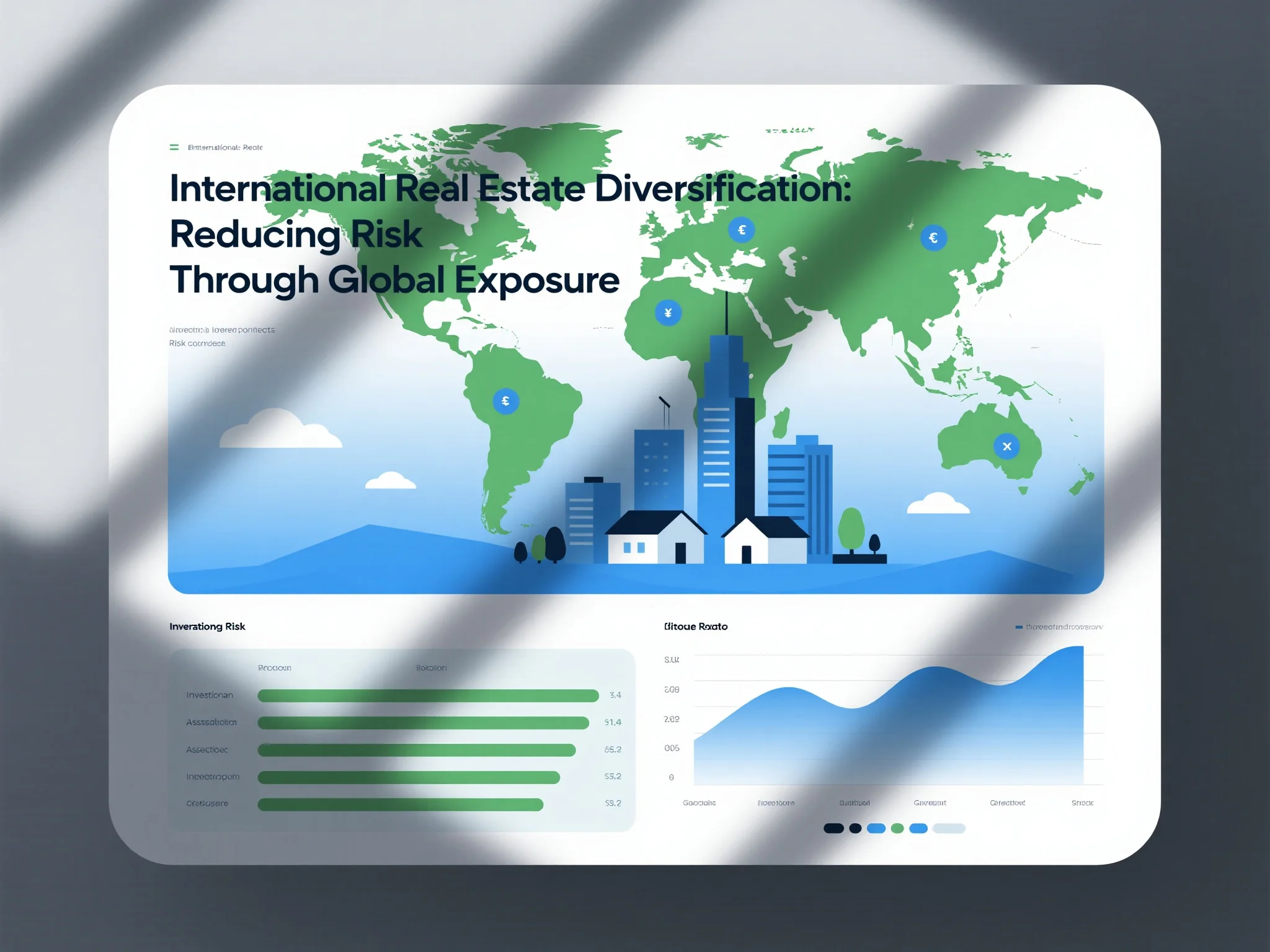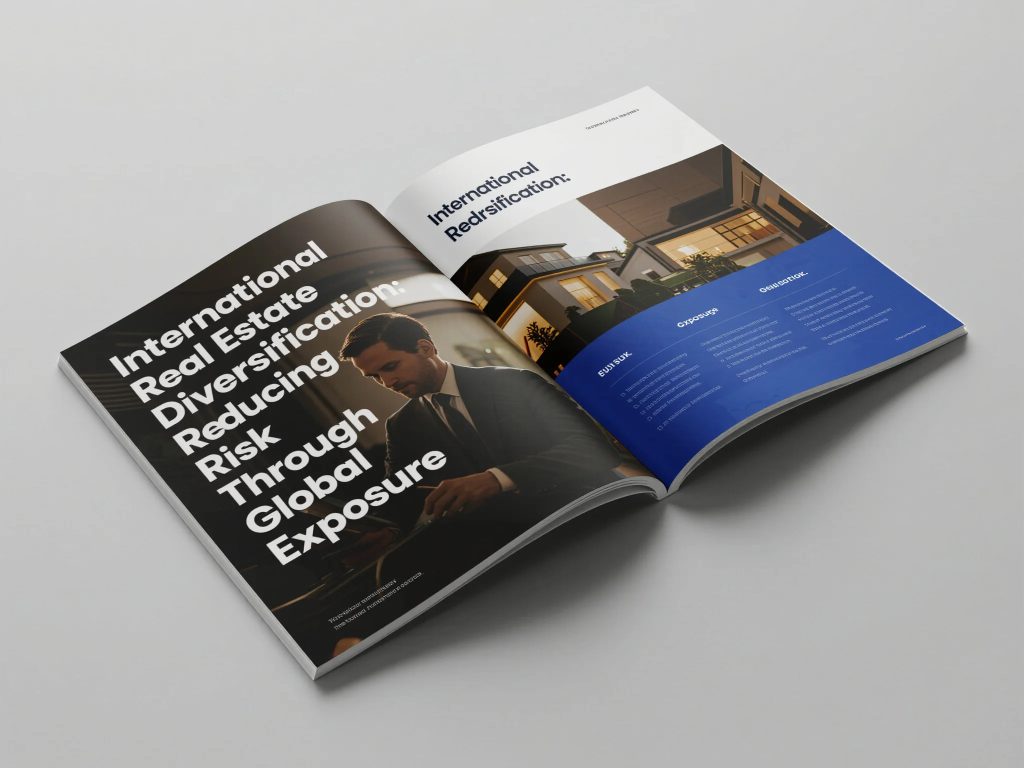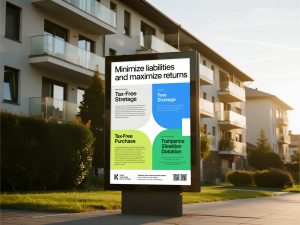Understanding International Real Estate Diversification Strategies The strategic implementation of international real estate diversification represents one of the most sophisticated approaches to portfolio risk management and return optimization available to high-net-worth investors seeking to reduce geographic concentration and capture growth opportunities across global real estate markets. International diversification in real estate investing involves allocating capital across multiple countries, currencies, and economic regions to minimize the impact of local market downturns, regulatory changes,
and economic cycles that may adversely affect domestic real estate holdings. The fundamental principle underlying international real estate diversification centers on the low correlation between real estate markets in different countries, which stems from varying economic conditions, demographic trends, regulatory environments, and market maturity levels that create natural hedging benefits for globally diversified portfolios. Successful international real estate diversification requires comprehensive understanding of foreign market dynamics, currency risk management, regulatory compliance requirements, and cultural factors that influence property ownership, management, and disposition strategies in different jurisdictions. The benefits of international real estate diversification extend beyond risk reduction to include access to emerging market growth opportunities, exposure to different property types and investment structures, and the ability to capitalize on market inefficiencies and arbitrage opportunities that may not be available in mature domestic markets. However, international real estate investing also introduces additional complexity and risk factors including political instability, currency fluctuations, regulatory changes, and operational challenges that require specialized expertise and sophisticated risk management strategies to navigate successfully.Luxury Real Estate Investment Opportunities in the United States The specialized focus on luxury real estate investment USA within an internationally diversified portfolio provides exposure to one of the world’s most stable and liquid luxury property markets, offering unique investment characteristics and defensive qualities that complement international holdings in emerging and developed markets. The United States luxury real estate market encompasses trophy properties in gateway cities such as New York, Los Angeles, Miami, and San Francisco, where international demand from high-net-worth individuals creates price stability
and liquidity advantages compared to luxury markets in other countries. American luxury real estate investments benefit from transparent legal systems, established property rights, sophisticated financing markets, and professional management infrastructure that reduce operational risks and enhance investor confidence compared to luxury property investments in less developed markets. The investment thesis for luxury real estate in the United States often centers on wealth preservation, inflation protection, and portfolio diversification benefits that stem from the defensive characteristics of trophy assets during periods of economic uncertainty and market volatility. International investors are particularly attracted to United States luxury real estate due to the stability of the dollar, political stability, and the prestige associated with owning premium properties in iconic American cities and resort destinations. The luxury real estate market in the United States also provides access to unique property types including penthouses, estates, resort properties, and commercial trophy assets that may not be available or accessible in other international markets. Due diligence for luxury real estate investments in the United States involves analysis of local market conditions, zoning regulations, tax implications, and management requirements that differ significantly from luxury property investments in other countries and require specialized expertise to navigate effectively.Private Real Estate Fund Structures for Global Investing
The utilization of private real estate funds as vehicles for international real estate diversification provides institutional-quality access to global property markets while offering professional management, risk mitigation, and operational expertise that individual investors may not be able to achieve independently. Private real estate funds specializing in international investments typically employ sophisticated strategies that combine direct property ownership, joint ventures with local partners, and strategic alliances with regional developers and operators to access attractive investment opportunities while managing country-specific risks and operational challenges. The fund structure provides natural diversification benefits by pooling investor capital to acquire multiple properties across different countries, property types, and market segments, reducing the concentration risk associated with individual international property investments. Professional fund management teams bring specialized expertise in areas such as foreign exchange hedging, local regulatory compliance, cross-border tax optimization, and cultural considerations that are essential for successful international real estate investing but may be beyond the capabilities of individual investors. The due diligence process for international real estate funds involves comprehensive analysis of the fund manager’s track record, local market expertise, operational infrastructure, and risk management capabilities across target geographic markets. Private real estate funds also provide access to institutional-quality properties and development projects that may not be available to individual investors due to minimum investment requirements, regulatory restrictions, or relationship-based access requirements in foreign markets. The liquidity profile of private real estate funds, while limited compared to public market investments, often provides more flexibility than direct international property ownership, which may be subject to foreign ownership restrictions, complex disposition processes, and limited buyer pools in certain markets.
Waterfront Property Investment Strategies and Market Dynamics
The specialized investment category of waterfront property investment represents a unique subset of international real estate diversification that offers scarcity value, lifestyle benefits, and long-term appreciation potential driven by limited supply and consistent demand from affluent buyers seeking premium locations with water access and views. Waterfront properties encompass oceanfront estates, lakefront residences, riverfront developments, and marina-adjacent commercial properties that command premium valuations due to their irreplaceable locations and the lifestyle benefits associated with water access and scenic views. The investment thesis for waterfront properties often centers on scarcity value, as waterfront locations cannot be created or replicated, creating natural barriers to supply expansion that support long-term price appreciation and value preservation characteristics. International waterfront property investments provide exposure to diverse markets including Mediterranean coastal properties, Caribbean resort developments, Pacific Rim luxury estates, and North American lakefront communities that offer different risk-return profiles and market dynamics. The operational considerations for waterfront property investments include environmental regulations, flood insurance requirements, maintenance challenges related to saltwater exposure, and seasonal demand patterns that may affect rental income and property utilization rates. Climate change considerations have become increasingly important in waterfront property investment analysis, as rising sea levels, increased storm intensity, and changing weather patterns may impact property values and insurance costs over long-term holding periods. The due diligence process for waterfront property investments requires specialized expertise in areas such as environmental assessments, flood zone analysis, coastal engineering, and local zoning regulations that may restrict development or renovation activities. Exit strategies for waterfront properties often involve sales to private buyers who value the lifestyle benefits and scarcity characteristics of premium water-access locations, though market liquidity may be limited compared to traditional residential or commercial properties.

High-End Residential Development and Market Positioning
The strategic focus on high-end residential development within international real estate portfolios provides exposure to value creation opportunities through ground-up construction, luxury renovation projects, and master-planned community development that can generate superior returns while contributing to portfolio diversification across property types and investment strategies. High-end residential development projects typically target affluent buyers seeking custom homes, luxury condominiums, resort residences, and master-planned communities that offer premium amenities, architectural distinction, and exclusive lifestyle benefits that command significant price premiums over standard residential properties. The development process for high-end residential projects requires sophisticated project management capabilities, architectural and design expertise, regulatory navigation skills, and market timing abilities that can significantly impact project profitability and risk exposure. International high-end residential development opportunities may include luxury resort communities in emerging markets, urban infill projects in established gateway cities, and master-planned developments in growing suburban markets that benefit from demographic trends and lifestyle preferences among affluent buyers. The risk profile of high-end residential development includes construction risks, market timing risks, regulatory approval risks, and financing risks that require careful analysis and mitigation strategies to protect investor capital while pursuing attractive return opportunities. Market analysis for high-end residential development involves understanding local demographics, wealth concentration patterns, lifestyle preferences, regulatory environments, and competitive dynamics that influence demand for luxury residential properties in target markets. The sales and marketing process for high-end residential developments often requires specialized expertise in luxury marketing, relationship building with high-net-worth buyers, and coordination with luxury real estate brokers who have established relationships with qualified purchasers. Exit strategies for high-end residential development projects typically involve individual unit sales to end users, though bulk sales to institutional investors or other developers may be considered depending on market conditions and project characteristics.
Currency Risk Management and Hedging Strategies
The management of currency risk represents a critical component of successful international real estate diversification strategies, as exchange rate fluctuations can significantly impact returns for investors whose base currency differs from the currencies of their international property investments. Currency hedging strategies for international real estate investments may include forward contracts, currency swaps, options strategies, and natural hedging techniques that can reduce the impact of adverse exchange rate movements while preserving upside potential from favorable currency trends. The decision to hedge currency exposure in international real estate investments depends on factors such as investment time horizon, risk tolerance, hedging costs, and the correlation between currency movements and local property market performance in target countries. Natural hedging opportunities may arise when international real estate investments generate rental income or appreciation in foreign currencies that offset currency exposure in other parts of an investor’s portfolio or business operations. The complexity of currency risk management increases when international real estate investments involve multiple currencies, as may occur with development projects that require local currency construction financing while generating rental income in different currencies. Professional currency risk management often involves working with specialized foreign exchange advisors or investment managers who have expertise in currency markets and can implement sophisticated hedging strategies that align with overall portfolio objectives and risk management requirements. The cost of currency hedging must be weighed against the potential benefits of risk reduction, as hedging expenses can reduce overall investment returns while providing protection against adverse currency movements. Long-term international real estate investors may choose to accept currency risk as a natural component of international diversification, particularly when investing in countries with stable currencies and strong economic fundamentals that support long-term currency stability.
Regulatory Considerations and Cross-Border Compliance
The regulatory landscape for international real estate investing encompasses complex legal frameworks, tax regulations, foreign ownership restrictions, and compliance requirements that vary significantly across countries and require specialized expertise to navigate successfully while maintaining legal compliance and optimizing tax efficiency. Foreign ownership regulations in many countries impose restrictions on non-resident property ownership, including limitations on property types, ownership percentages, approval requirements, and ongoing compliance obligations that must be understood and addressed before making international real estate investments. Tax considerations for international real estate investments include income tax obligations in both the property location and investor’s home country, withholding tax requirements, transfer tax implications, and potential double taxation issues that may be mitigated through tax treaties and proper structuring strategies. The legal structure for international real estate investments may involve direct ownership, corporate entities, trust structures, or partnership arrangements that provide tax efficiency, liability protection, and operational flexibility while complying with local regulations and investor requirements. Due diligence for international real estate investments must include comprehensive legal review of property titles, zoning regulations, environmental compliance, and any restrictions or encumbrances that may affect property ownership, use, or disposition rights. Professional advisory relationships become essential for international real estate investing, including local legal counsel, tax advisors, property managers, and regulatory compliance specialists who can provide ongoing support and guidance throughout the investment lifecycle. The regulatory environment for international real estate investing continues to evolve, with potential changes to foreign ownership rules, tax regulations, and compliance requirements that may impact existing investments and future investment strategies. Exit planning for international real estate investments must consider local disposition procedures, tax implications, currency conversion requirements, and any regulatory approvals that may be required for property sales to foreign or domestic buyers.
Portfolio Construction and Risk Management
The construction of internationally diversified real estate portfolios requires sophisticated analysis of correlation patterns, risk-return characteristics, and market dynamics across different countries and property types to optimize diversification benefits while managing overall portfolio risk and return objectives. Geographic diversification strategies may focus on developed markets with stable regulatory environments and transparent transaction processes, emerging markets with higher growth potential but increased political and economic risks, or balanced approaches that combine exposure to both market types depending on investor risk tolerance and return requirements. Property type diversification within international real estate portfolios may include residential, commercial, industrial, and specialized properties that respond differently to economic cycles, demographic trends, and market conditions in different countries and regions. The correlation analysis for international real estate portfolio construction involves understanding how different markets respond to global economic conditions, currency movements, interest rate changes, and geopolitical events that may affect multiple markets simultaneously. Risk management for internationally diversified real estate portfolios encompasses country risk assessment, currency risk management, liquidity risk evaluation, and concentration risk monitoring that require ongoing analysis and potential portfolio adjustments based on changing market conditions. The rebalancing process for international real estate portfolios may involve periodic review of geographic and property type allocations, with adjustments made based on performance attribution analysis, changing market conditions, and evolving investor objectives and risk tolerance. Professional portfolio management services for international real estate investing may include investment advisory, asset management, risk monitoring, and reporting services that provide ongoing oversight and optimization of internationally diversified real estate holdings. The performance measurement and benchmarking for international real estate portfolios requires consideration of currency effects, local market performance, and risk-adjusted returns that provide meaningful comparison to relevant benchmarks and investment alternatives.




